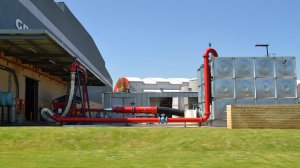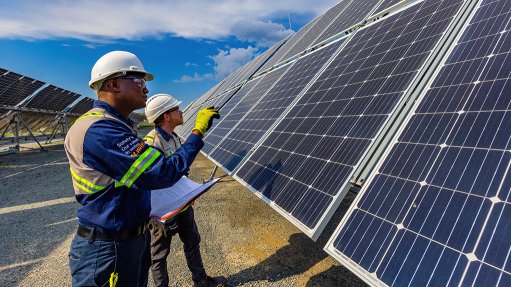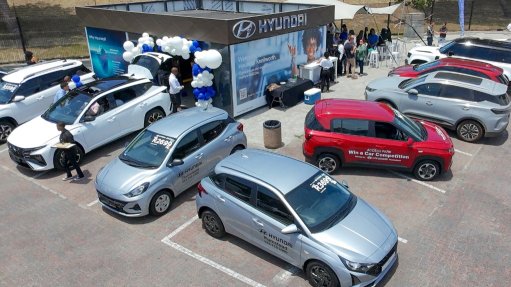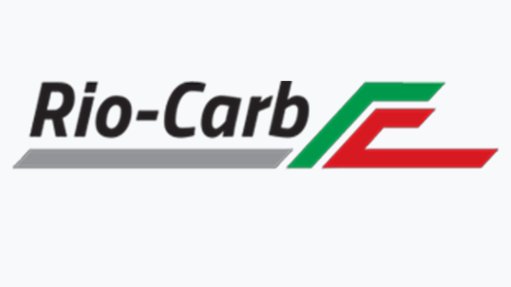Pumps company aims for faster route to market


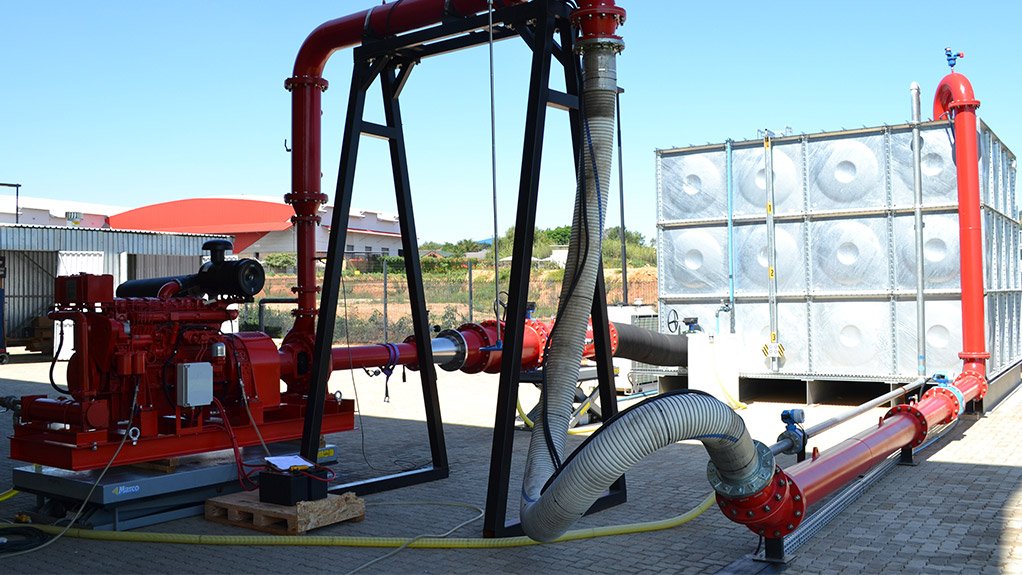
NEW OPPORTUNITY Grundfos’ new fire pump set test-bed provides a testing solution for the South African fire protection industry
NEW OPPORTUNITY Grundfos’ new fire pump set test-bed provides a testing solution for the South African fire protection industry
Pumps and pump components supplier Grundfos will expand its service and product offering within the next few months with the launch of their new Automatic Sprinkler Inspection Bureau (ASIB) standard-approved fire pump set test-bed.
“While Grundfos has several accreditations, including UL FM, National Fire Protection Association (NFPA), Loss Prevention Certification Board and UNI EN in the global fire industry, the new set provides an opportunity for the company to provide a testing solution suitable for the South African fire protection industry,” says Grundfos South Africa marketing manager Lorraine Smart.
South African fire pump sets are built and maintained according to the ASIB standards and specifications, which are unique to South Africa.
As there are not many testing facilities for fire pumps in South Africa, Grundfos – which manufactures and supplies the pump sets for fire equipment – can now assist the industry by providing the testing of the fire pump sets according to the ASIB standards and specifications, Smart points out.
“Firefighting pumps are vital equipment in any building. The fire pump set test-bed can complete a six-hour run-test in which the engines, motors and specific duty points of the pumps are tested according to theirs’ and the tester’s curve parameters,” she says. Apart from ensuring that the set achieves a specific set pressure, it is also tested to see whether it can perform at a 150% higher pressure point than the specified NFPA standards.
The company plans to install its new ISO 9001 submersible pump testing equipment at its facility in Meadowbrook, Johannesburg, within the following three months. The testing equipment will be imported from Grundfos’ headquarters, in Denmark, to allow witness and ISO standard testing of the submersible pump range.
Another product to be launched in the next two months is a repackaged version of the world-renowned 4-inch stainless steel borehole pump range. Code-named “SP Ultra”, the product will provide the company with a specific route to market and the end-user with a competitively priced package of a starter, motor and pump. This offering will simplify the acquisition of pump components for end-users, notes Smart.
Further, she comments that Grundfos has completed the supply of water treatment equipment to State-owned power utility Eskom’s Medupi and Kusile power plants, in Limpopo and Mpumalanga respectively, and the supply for the fine-bubble aeration system at a wastewater treatment plant in Bellville, Cape Town.
Expansion Plans
Grundfos will continue to expand on its capacity to locally assemble several pump ranges such as boosters, end-section sets, borehole pumps and controls.
“The local assembly of these products provides a faster route to market, and a quicker supply of these components to end-users,” Smart says, adding that it also enables the company to have better service levels and increased flexibility of product supply, which is a key focus for the year.
She explains that among the pump ranges, such as the CR range of vertical multistage pumps, there are several variants and components, which take longer to import from Denmark.
“We can assemble some of the components locally, but we will not reduce shipping other components from Denmark, as several components for the pump ranges are still needed,” she points out.
Further, Smart notes that the company is producing a packaged chlorine dosing solution for water treatment at various sites across the country. The chlorine gas solution comprises a built-in dosing unit within a mobile container, which can easily be moved from one site to another,” she says, noting that the company already has six dosing units in operation.
In addition, the company notes that smartphone and remote communication, such as its iSolutions, which is used in conjunction with pump installations, has been well received by the industry, particularly for remote and multiple responsible installations.
Engineering News reported last year that Grundfos launched its iSolutions, which is a range of intelligent pump solutions that include standard and integrated pumps, controls, sensors, variable frequency drives (VFDs), connectivity and software, as well as the company’s controls system. This system can wirelessly communicate pump performance and faults using Apple- and Android-based devices that have installed the Grundfos GO application.
Currently, there are more than 100 installations in South Africa that can communicate using smartphone technologies, she notes.
The remote management solution for pump installations and maintenance is used at several of South Africa’s major sport stadiums and water supply installations.
“The smartphone communications for installations are developed and improved on, owing to the advantages of iPhones,” Smart says, adding that smartphones provide more flexibility for operators, as it programmes and monitors the pumps’ readings for any faults.
Energy Efficiency
While the current focus is on energy and energy efficient solutions, such as the efficient International Efficiency ratings on the motors to the VFDs in the controls and starters in the pumps industry, Grundfos SA MD Jonathan Hamp-Adams notes that the renewable solar inverter (RSI) has also been a popular product.
Grundfos launched the RSI in March last year as an added product to the existing SQF range, which has an operating range of 90 m3 per day or 200 m, for the renewables market, as it provides a solution for users who do not have access to electricity, but desire larger volumes of water.
The RSI can power Grundfos’ higher capacity submersible SP pump range, producing a maximum flow of 150 m3/h or at a depth of 500 m.
About 60 RSI installations have been completed since its launch and about 7 500 solar- powered borehole pumps were sold in the last year.
Skills Focus
Hamp-Adams notes that the expected infrastructure investments in South Africa, such as the 18 Strategic Infrastructure Projects introduced by the Presidential Infrastructure Coordinating Commission, will drive the huge demand for increased skills in the pump industry.
“We have certainly noted a change in the professional profile of our employees, who now generally have a formal engineering qualification,” he says, noting that depth of skills remains a challenge for the industry.
Hamp-Adams adds that even though “a basic engineering qualification adds skills to the equation, there is nothing like experience when trying to solve complex technical problems, particularly in areas of water treatment”.
Further, Smart comments that Grundfos invests in training at its academy, at the Meadowbrook site, to provide people with the necessary skills for the industry. These skills increase job opportunities and build confidence in product knowledge and technology.
“Many older technicians and artisans are retiring, but are not transferring the skills to others in the industry. “We need to maintain and retain those skills in the industry,” she stresses, adding that the company retains the skills and knowledge by training their staff and customers in terms of products, technology, application and sales confidence.
Since the company’s training facility was launched in January 2006, it has trained more than a 100 trainees on its five-month programme, of which 75% to 80% have been successfully placed in permanent jobs in the industry by the company. In addition, the academy has seen thousands of industry trainees pass through its doors on various modular programmes.
Future Outlook
Although the pumps industry faces challenges in Africa, such as logistics, training and language barriers, Smart notes that the continent still holds oppportunity for the industry, as it is not a saturated market yet and infrastructure development is continuing.
Grundfos’ business increased over the last year, owing to the positive impact that its R150-million Meadowbrook facility has had on the company’s local assembly, after-sales service and supply chain on the continent, Hamp-Adams concludes.
Article Enquiry
Email Article
Save Article
Feedback
To advertise email advertising@creamermedia.co.za or click here
Comments
Press Office
Announcements
What's On
Subscribe to improve your user experience...
Option 1 (equivalent of R125 a month):
Receive a weekly copy of Creamer Media's Engineering News & Mining Weekly magazine
(print copy for those in South Africa and e-magazine for those outside of South Africa)
Receive daily email newsletters
Access to full search results
Access archive of magazine back copies
Access to Projects in Progress
Access to ONE Research Report of your choice in PDF format
Option 2 (equivalent of R375 a month):
All benefits from Option 1
PLUS
Access to Creamer Media's Research Channel Africa for ALL Research Reports, in PDF format, on various industrial and mining sectors
including Electricity; Water; Energy Transition; Hydrogen; Roads, Rail and Ports; Coal; Gold; Platinum; Battery Metals; etc.
Already a subscriber?
Forgotten your password?
Receive weekly copy of Creamer Media's Engineering News & Mining Weekly magazine (print copy for those in South Africa and e-magazine for those outside of South Africa)
➕
Recieve daily email newsletters
➕
Access to full search results
➕
Access archive of magazine back copies
➕
Access to Projects in Progress
➕
Access to ONE Research Report of your choice in PDF format
RESEARCH CHANNEL AFRICA
R4500 (equivalent of R375 a month)
SUBSCRIBEAll benefits from Option 1
➕
Access to Creamer Media's Research Channel Africa for ALL Research Reports on various industrial and mining sectors, in PDF format, including on:
Electricity
➕
Water
➕
Energy Transition
➕
Hydrogen
➕
Roads, Rail and Ports
➕
Coal
➕
Gold
➕
Platinum
➕
Battery Metals
➕
etc.
Receive all benefits from Option 1 or Option 2 delivered to numerous people at your company
➕
Multiple User names and Passwords for simultaneous log-ins
➕
Intranet integration access to all in your organisation


